Here in Seattle, we ended July with six consecutive days of 90-plus degree heat—a new record. That is by no means as hot as other parts of the world, but it has been a sobering event here. On the first day of the heat wave, I had gone kayaking. The air was cooler by the water and if I got hot, all I had to do was dip my hands and hat in the water. During the last two days of the heat wave, smoke from wildfires in British Columbia tainted the air a blue haze and the faint smell of wood smoke. Kayaking and all other forms of outdoor exercise weren’t advisable so I was stuck at home. I don’t have air conditioning—most old houses in Seattle don’t—so I got by with fans, an air purifier, and a spray bottle for a cooling mist of water. Even so, the heat and the confinement were stultifying. Thinking there might be some truth in the saying “where the mind goes, the body follows,” I pulled out the color slides of the kayaking trip I took in Greenland 20 years ago. Peering through the loupe at the luminous blue icebergs and the chalk-white glaciers provided the escape I needed. There were nine of us in the group. Here, from left, are Jette and Ole from Denmark, our guide Baldvin from Iceland, and Barbara and Randy from the U.S. They had rafted up for a snack break while paddling north along Sermiligâq Fjord. Randy tried his luck at fishing but never caught anything.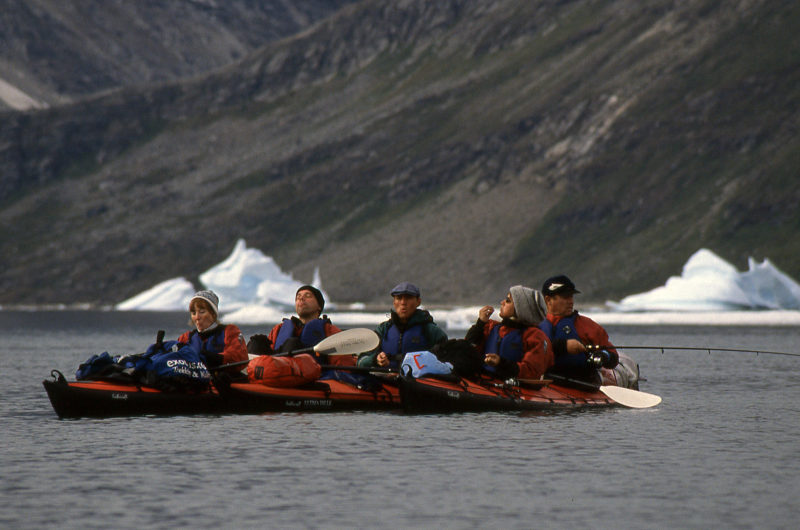 Photographs by the author except as noted
Photographs by the author except as noted
Join The Conversation
We welcome your comments about this article. To include a photo with your remarks, click Choose File below the Comment box.

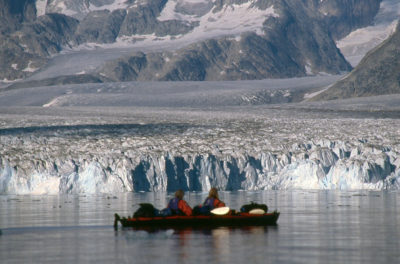

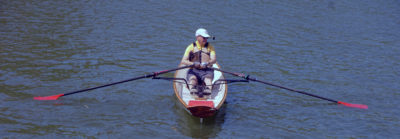

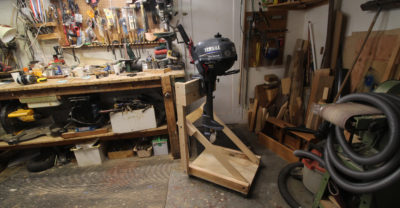

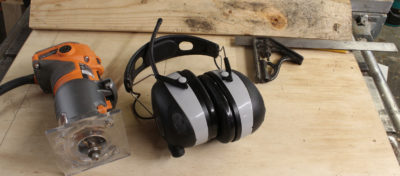

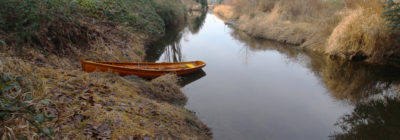
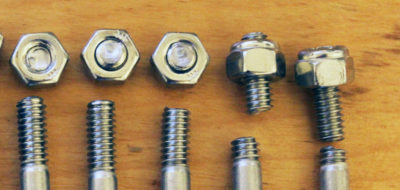
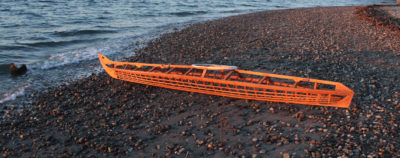

Thank you, Chris, for a wonderful story and amazing images that truly captured the depth perception you were trying to describe (a talent I have yet to master). I especially liked “Big Cliff.”
Chris,
Sometime I would like to hear the short list of things you haven’t done! A beautiful experience beautifully conveyed.
Andy
Stunning photos, Chris. Thank you.
The Feathercrafts you all were paddling are very appropriate boats for kayaking in exotic and far-off places (or should I say were–as the company has given up the ghost. I don’t know whether they still sell spares for existing boats). I have both a single and a double, and have taken several trips with them, mainly to Baja. Today, I am appalled by the idea of hauling the heavy boat bags and camping gear through airports, but somehow we did it.
Of course, now, with the exorbitant fees airlines are charging for cargo, flying with these is really problematic. The last time we returned from Baja, they charged us around $300 or so excess baggage fee just for the return trip. Ouch.
On one trip to Baja (Isla Espiritu Santo near LaPaz), we were assembling the boats on Playa Tecolote on a hot, sunny day. The double (always easier to put together than the single) was pretty straightforward, but the nylon deck on the single had shrunk to the point where the ordeal was eliciting our full repertory of blasphemies. Only later did I realize we could have made the task much easier by dumping buckets of water over the decks to loosen and soften the nylon.
Once together, both boats perform very well on the water, and provide reasonably generous room for packing gear. They handle El Norte, which always brings very lumpy water, with aplomb. On some of those days, even the big (20 ft. or longer) fiberglass pangas stay on the beach.
I have friends with a double Feathercraft who have flown it to Alaska, the Bahamas, Baja, Belize, and Thailand, where they went through the Tsunami of 2004 unscathed.
One advantage of bringing your own boat to such areas is that the rental boats often are not very well maintained and display a history of abuse.
!!!
Thank you for the image journey.
Wonderful pictures, Chris. Thank you for the story.
Regarding airports and luggage, in September 2012 my husband and I took our two Folbot singles (Cooper and Kiawah) to Nova Scotia. The bags weighed in just under 49 pounds and the dimensions qualified as standard checked luggage with no extra fee. We knew that. The staffer at the check-in desk kept reweighing, as she couldn’t believe it was under the 50-pound limit. We had a wonderful time kayaking along the southeastern coast, often in rough conditions with the chop washing over the bow to hit us in the chest. With skirts on, we stayed warm, dry and secure. Beautiful place to paddle.